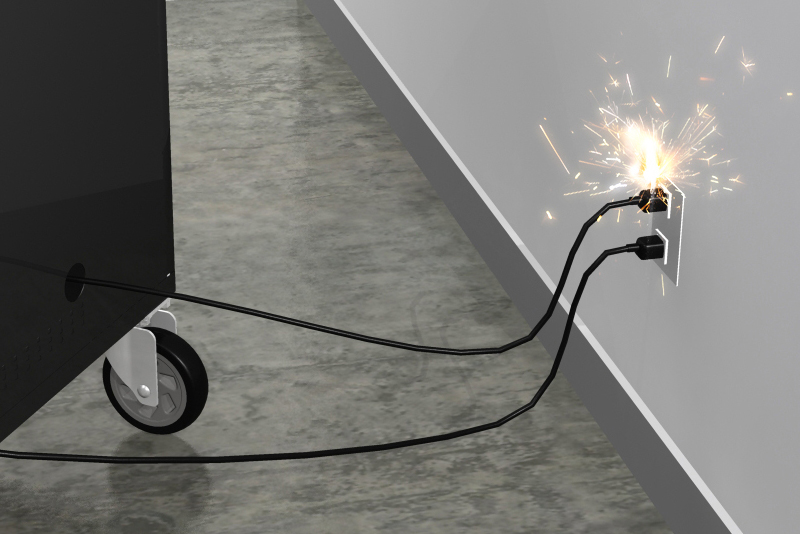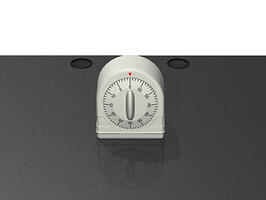If you have ever used mobile device carts before, you have probably experienced some frustration when a charging unit hasn't properly charged the devices in the cart. It can really set a teacher and the classroom back when the devices aren’t available to incorporate into the lesson plan.
Improper or negligent mobile device charging not only affects classroom flow and learning, it also effects how well mobile devices serve to provide students with ample Ed Tech learning opportunities.
Back to help you be in the know, your Cart Guru is going to step you through the differences between charging methods, a little about electrical charges in general, what these different types of charging methods mean for your devices, and most of all, to your classroom!
If you are just starting to look around for the best possible notebook carts for your devices, you may get quickly bogged down by the various cart charging methods. Even if you are trying to replace your current storage cart, or shop around for better prices, it can seem like a lot of information to sort through. I am here to break it down for you. If you crave more technology after reading my blog, you're a true geek, maybe even a guru... you may check out our website for more info.
Read on and see exactly what you need to know about the best ways to charge devices, at a high level, and how to keep them charged. I will also talk to you about what your best charging options can be based on your needs.
Not All Charging Methods Were Created Equal
It is safe to say that most Chromebooks/notebooks or tablets are equipped with a lithium-ion battery. These batteries are recharged by the use of an AC adapter that is provided by the device manufacturer. These types of adapters convert electricity from a wall outlet into a different form of electrical current that allows the battery to restore its energy.
Here it is helpful to stop and remember that electrons carry electrical charges, and electrical current exists in two forms as follows:
Alternating Current (AC)
- Electrons’ electrical current periodically switches polarity
- Considered an efficient energy transmission method
- Energy available from wall outlets
Direct Current (DC)
- Electrons move in one direction in a straight line
- This power is easy to store in batteries
- Portable electronics use DC power
When a cart's charging unit has neglected to sufficiently recharge batteries, that’s when the real headaches come into play.
More Basics: To focus a little more on the technology of charging, here are some basics to remember about AC and DC power:
- AC energy has to be converted to DC energy so the batteries can charge.
- There are many different types of AC adapters because there is not just one conversion.
- Almost every device uses a different voltage so AC 110V from the wall has to be converted to a variety of DC voltages. It depends on what the battery in the device needs, which is usually anything from 24V to 5V.
- A switched-mode supply can efficiently yield a very wide range of voltages and frequencies.
Guru Disclaimer: Keep in mind I will not be able to expound upon all the many details I could cover here about carts such as electrical safety and best types of carts. I will save those for a future blog. But if you want more details about charging your devices, you can contact me at (866) 393 4202, ext. 205, and I will gladly share more information with you.
Simple, straight-up, “no frills” Power-Strip-to-the-Wall Charging Also known as “no charging system,” this method finds you simply connecting each of the cart’s power strips directly to a wall outlet and off you go. The only “positive” to this method, however, is that it is the least expensive. If you wish to charge very few devices, or devices with very low power draw such as tablets, then this choice may be appropriate.
Also known as “no charging system,” this method finds you simply connecting each of the cart’s power strips directly to a wall outlet and off you go. The only “positive” to this method, however, is that it is the least expensive. If you wish to charge very few devices, or devices with very low power draw such as tablets, then this choice may be appropriate.
Yet the biggest and most important drawback is that, it will blow the wall outlet’s breaker if it becomes overloaded and cannot work reliably and safely. So unless you are an expert, all your teachers using it are experts, your school electrician has sanctioned it, and the cart is mostly stationary with the same outlet that was thoroughly checked and tested prior, I would stay away from this charging method. It’s always good to avoid the dark ages, especially as technology has advanced to better accommodate carts and more than just a few devices such as those used in schools.
Timer-Based Charging (AC) Cart timers are the most basic way to prevent circuits from overloading. It works by evenly distributing power between each power strip for a manually set amount of time, such as 15 minutes. Sometimes you will also be given the wonderful task of managing that set time. It can be like playing darts in the dark.
Cart timers are the most basic way to prevent circuits from overloading. It works by evenly distributing power between each power strip for a manually set amount of time, such as 15 minutes. Sometimes you will also be given the wonderful task of managing that set time. It can be like playing darts in the dark.
timed chargingThe trouble with using timer-based charging is that it does not account for the devices that are the most drained. Instead, it merely turns on and off different power strips based on the specific amount of time that was set. This means that there is still a chance that not all devices will be fully charged for class due to the varying amounts of times devices will take to be charged.
If devices stop charging based on a specific time input, batteries can be undercharged. On the other hand, if the charging process continues after the devices are fully charged, then it can result in wasted energy and time.
Think of it this way: if you have a cart of 30 devices on two power strips of 15 outlets each, this will result in each of those strips receiving power for 15 minutes, and then not for the next 15 minutes.
This method won’t trip a breaker, but it will take much longer to charge several school mobile devices because, in some cases, not every device needs charging in the first place. If, for example, the first 15 devices are already thoroughly charged, there would still be a 15-minute pause 15 on that strip, effectively doing nothing.
“Automatic” Timer Switching or “Hybrid”
Charging systems that automatically switch are an upgrade on the standard timed-charging method, filling in some of the gaps I just mentioned. The difference is that the power will now automatically switch between power strips in smaller intervals to help supply the devices equally. However, a charger operating on automatic cycling or “round robin” is still switching and pausing, based on predetermined amount of time. Thus, the charging process does not adjust to the amount of power that is actually needed to charge your devices.
Sometimes these systems provide a few options where the user can press a button more than once to “focus” charging only one section. While this process has been modified with good intentions, you are in the dark unless you know exactly where the uncharged batteries are contained within the cart.
“Intelligent Charging” or “Power Sensing”
Intelligent charging systems are able to charge devices faster than the other methods I have mentioned. They are faster due to power sensors. These systems are able to determine which devices are the most drained and then supply power directly to the devices that most need it. When the devices reach a certain charge, the other devices will receive power as well, preventing the circuit breaker from tripping or from wasting too much time on just a few devices.
Usually these systems sense the power per power strip and not per individual AC adapter. Per-device options are certainly possible, but can be cost prohibitive due to requiring many more sensors and very expensive power strips. Weighing this against the benefit they already provide compared with the previous three systems, the higher cost wouldn’t add that much more value.
With this method, when the devices are fully charged, the charging system will discontinue power. This is an excellent energy-saving method. According to some, this method can even save battery life by reducing the heat and stress on the battery. However, overcharging a lithium-ion battery is not technically possible due to sensors in the devices which work to prevent that.
Intelligent charging lowers your electrical bill and increases device availability along with classroom adoption rates when compared to other charging methods.
DC Charging System: One Big AC Adapter
Based on the information you learned above, you might think that DC charging would be the obvious choice because it’s more direct, and, therefore, faster. Instead of using 30 individual AC adapters, one for each device, why not use one big one, right? It would surely be more efficient in converting AC to DC.
Yes—I believe that this could be one of the best ways of charging. In most environments, though, there will inevitably be changes in devices, connectors, voltages, and wiring.
Fortunately, DC converters allow for a continuous stream of power and eliminate the need for timers, switches, and AC adapters, but the lack of alternation in the current requires that the charging unit be adjusted to the specific current necessary for device charging.
It is important that this adjustment be done by a professional. If your school plans to transition to new or different devices in the future and will be using the same carts, then step away from this choice since each make or model of device has its own charging requirements, power draw levels, DC conversion efficiency rating, charging algorithm, and DC connector.
So Which Method is the Best?
The best charging device for your school’s mobile devices really depends on the type of devices you have, how many you have, and how you are going to use them. In some instances, you may not need a very sophisticated charger to get the job done.
Another thing to keep in mind is that some charging systems also offer additional features such as USB and auxiliary ports, which can be very useful. These options can also contribute to the longevity of the charging system by allowing for easier upgrades in the future. They also help support peripheral devices such as printers and provide a simpler way to send updates to school devices and such.
Final Guru Disclaimer: I am obviously not free of bias because I work for a company that has provided schools with the original Intelligent Charging System for many years now. We offer other options as well, including USB sync and charge, a form of DC charging for tablets. Let me know if this blog was helpful to you and your school. See you next time!
